The biggest strength that television has against movies, at least in their current iterations, is that there is so much more time in the former. That means that the main story arc can unspool episode by episode, versus within just a film’s run time, and that means that the twists, as they come, have time to gently unfurl. That trait was in full effect during Psycho-Pass‘s fifth episode, a combination of revelations that push interest forward even as more interest arises.
Just like last episode, the show opens on a lie: Akane and “Spooky Boogie” meet within the latter’s chatroom, wherein she admonishes Akane and the Public Safety Brigade for failing to catch fellow virtual reality personality Talisman and tarnishing her reputation. Akane, thinking she’d just implicated a crucial ally, is super apologetic, but even from the beginning of the episode, Kogami is already suspicious of this new Spooky—whom the watcher knows is actually someone else.
Back at the PSB war room, Ginoza and Kogami banter as to who understands the potential criminal motives and actions of the person controlling Talisman better; it gets to the point where Kogami warns his boss, “Don’t try so hard to under the criminal mind. You’ll wind up with us.” (The line is light, but it carries deeper resonance later on.) Per usual, Ginoza chooses the “traditional” route of investigation, via Talisman’s IRL body’s access points, but Kogami takes some time to come up with his (of course) alternative, less conventional idea.
Mostly want to highlight how rare to see everybody in one room together!
Akane and Masaoka shadow Kogami as he conducts his own research; meanwhile, the other two have a brief discussion about philosophy.
The main conflict between naive rookie Akane and weathered Enforcer Masaoka doesn’t have to do with age so much as with Internet fluency—the former, like many younger generations now, knows the web inside and out and uses it as an enhancement for the totality of their lives; the latter, like many older generations now, questions the authenticity and sincerity of the online world and the connections within.
The holo-cosplay display from the last episode certainly didn’t sway him.
To Akane, “[The Internet isn’t] good or bad. Simply enough, it’s just there, so we accept it and we use it.” Neither a cut-and-past social good or social bad, Masaoka drops a little bit of Jean-Jacques Rousseau’s A Discourse on Inequality…
Bless you, Masaoka.
…to illustrate how in theory, people are social animals who crave that social-ness; that’s what these anonymous virtual forums provide, for people who may oftentimes be living alone. It’s another instance of his “teaching” Akane the ways of the world, which is interrupted by Kogami moving the plot forward—by comparing Spooky Boogie’s speech patterns through various recorded logs, he’s been able to determine that, while the impersonation is quite accurate, that the current Spooky wasn’t the one who was Akane’s classmate.
“Don’t you know anything, Akane?”
Meanwhile, Ginoza, Kagari, and Kunizuka (welcome back!) decide to go after the access points, only to walk directly into a booby trapped apartment.
This is what happens when you don’t listen to Kogami.
While the PSB teams work through catching Talisman, the man they’re looking for (who was introduced as the one who killed the real Spooky Boogie last episode) gets a call from another evil co-worker. While the message is ostensibly a foreshadowing scene (you’ll see), several connections get set: The man behind the new Spooky and Talisman avatars is himself working as a proxy of Makishima (Kogami’s presumed arch-nemesis); this man needs some sort of drug injection; and if he screws up with these online personalities, the man on the phone and presumably Makishima will be all sorts of mad.
How much clearer can he be.
Knowing that the real Spooky is probably dead, the PSB team goes through Akane’s class records to find out the IRL identity of her classmate: Shoko Sugawara. Though the viewer already knows this, Shoko’s dead, disposed of just as Talisman’s original user was. Akane reflects on this turn of events and, of course, blames herself, but Kogami forces her to snap out of her funk, while reframing Shoko’s death as a testament to just now badly these people need to be caught.
So, how to find someone that now knows they’re being searched for? By going back—based off of Kogami’s find and theorizations, Talisman and Spooky aren’t the only online avatars who’d been claimed by both’s murderer. After some digging by Shion, the PSB team comes up with the case of Rainy Blue, a popular forum ostensibly owned by a young boy—who’d died years prior. That puts the identity thief’s avatar count to three.
Mega Man, no!!!
So, what do all three of these avatars have in common? Kogami hones in on it: A fall in popularity coupled with a revitalized rise, buoyed by a relentless and all-knowing fan culture; to those users, Akane included, “It doesn’t matter if [these idols are] fake or real. These avatars are idols to fans. They’re icon. Icons don’t become icons of their own will. They’re like projections.” It’s then that he reveals the real theory he’s been sitting on: That the person they’re looking for is a super-fan, who knows their idols better than the actual idol users do.
Did anybody else get chills at the Perfect Blue vibes? Also, what a well-done indictment of celebrity-obsession culture.
Kogami goes into full detective mode, and asks Shion to pull up 1) the most fervent fans of all three avatars, and 2) cross-reference them with the pre-revitalization and post-revitalization fandom numbers. Of all the fans of all three avatars, only one super-fan consistently stops visiting his idols’ pages even as their reputations turn: one Masatake Mido, who a couple of years back began studiously avoiding Psycho Pass street scans, allowing him to keep a low profile while running some of the virtual world’s biggest personalities.
The PSB team splits up into their usual groups, with Akane, Masaoka, and Kogami going after Mido at his hotel room and presumed “work”/criminal space. Though Masaoka appears to be suddenly drinking his way through the job…
Also, Akane’s under 21??? That might be a tic in the English translation though.
…his alcohol serves a greater purpose, a sentiment one wishes would be more universal.
Alas, the trio land into another booby-trap, as Mido’s in the hotel room but has control over its interior holographic displays. In a testament to his computer skills and desperation to keep on his charade, Mido turns the hotel into a hazy, geometric wonderland, causing the PSB team to keep their Dominators sheathed lest they injure innocents.
This entire sequence was well done; this screencap doesn’t show that.
But then! After convincing Kogami to throw his lighter (of course), Masaoka uses it and the aforementioned alcohol to turn into some sort of fire-breathing master, causing the hotel’s sprinklers to go off and its interior holograms to fail.
How did this not come up earlier???
With normal sights and sounds, Kogami’s Dominator picks up Mido’s signature, and blows his arm off—alas, Mido’s foreshadowed drug use allows him to keep going, back into the virtual shrine that is his home.
CREEPY.
(Aside: That entire action sequence is brilliantly edited in sharp cuts. It was disorienting at first, but very in line with the movement of the characters and the plot.)
“Safe” at home, Mido rejoices with the “true” cores of the idol personalities, as he’s programmed them so they love and adore him, showering him with individualized platitudes. He even calls these idols, now apart from the actual personalities that birthed them, Plato’s idealized Forms—suggesting that, as Kogami had earlier hypothesized, Mido sees the virtual quality of the idols as the true core of their adoration, meaning that he truly believed he’d saved them and was seeing them as independent of his re-programming. It all lends itself to a very chilling observation regarding “OMG GOALS” celebrity culture.
But then! Having sensed that Mido’s clearly now a liability, the mysterious calling man from before activates a program that turns over Mido’s avatar control. The new controller: None other than Makishima, who name-drops a Japanese avant-garde filmmaker and poet (Shuji Terayama; if anyone’s familiar with his work, fill me in) and then proceeds to break Mido’s spirit down. By the end, though Ginoza, Kunizaka, and Kagari trap and kill the IRL Mido, by the time Makishima finishes with the man, he’s already dead.
The price you pay for having a psychopath as a one-time benefactor.
With that case successfully “closed,” as Makishima has yet to be found out by the PSB team, Ginoza congratulates Akane on a job well done. She points out that it’s Kogami who did much of the detective work on this case, giving Ginoza another chance to underscore the divide between Inspectors and Enforcers. (This time, by mentioning that he’d had a partner who got too deep into thinking like a criminal.)
To make it even clearer, he sends Akane a personnel file—none other than Shinya Kogami’s, wherein we learn with a shock that the man used to be an Inspector and Ginoza’s aforementioned ex-partner! While this doesn’t explain the weird bad blood he has with Masaoka, Akane finally sees Kogami clearer: the reason he’s so good at this police work is because, at the end of the day, that’s what he’d been trained to do. What happened to him is the very thing everyone is now warning Akane about; he got in too deep and instead of resetting like everyone else, he followed the call of the void and never looked back.
Until next time.
Tweet your thoughts on Season 1, Episode 5 of Psycho-Pass to me here. This should go without saying, but NO SPOILERS PLEASE!
Lilian Min is a contributing editor at HelloGiggles and has written for The Atlantic, Nylon Magazine, BuzzFeed, and others. Read her other work here and tweet her here.
—Please make note of The Mary Sue’s general comment policy.—
Do you follow The Mary Sue on Twitter, Facebook, Tumblr, Pinterest, & Google +?



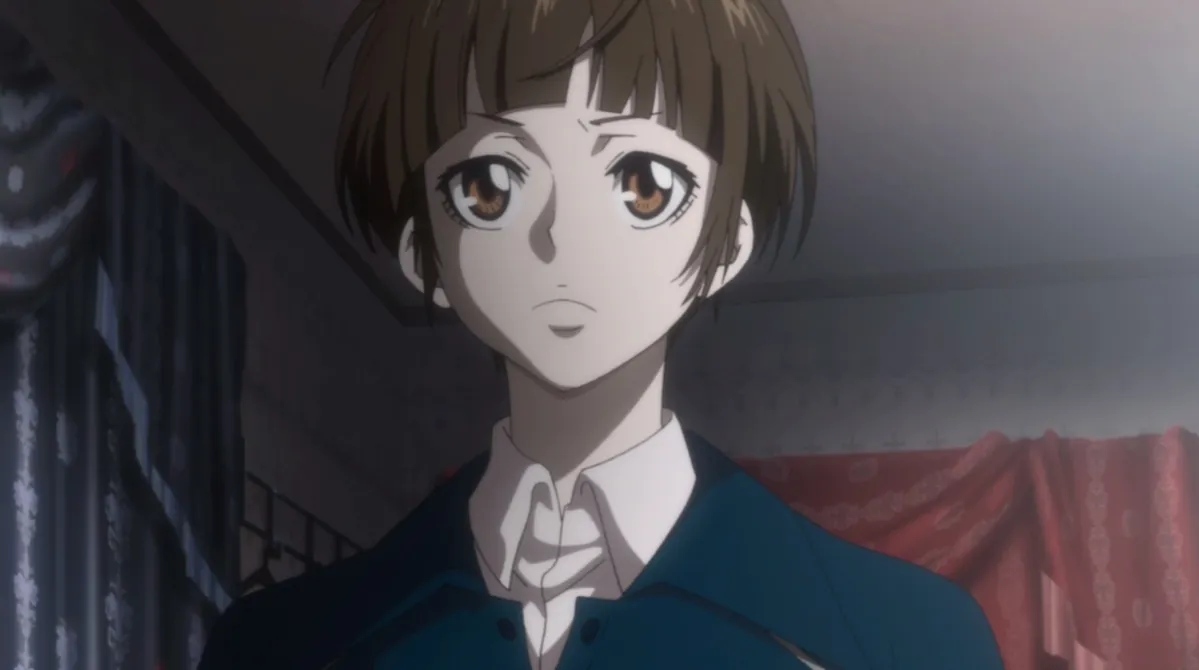
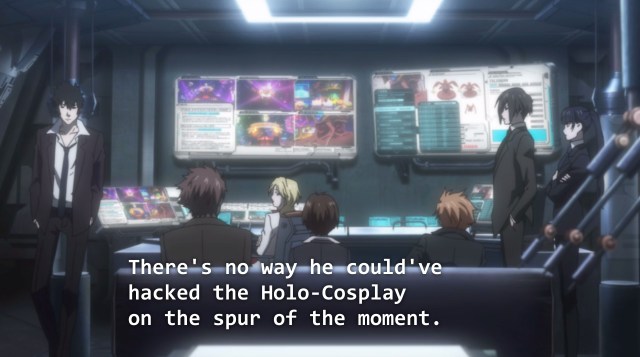
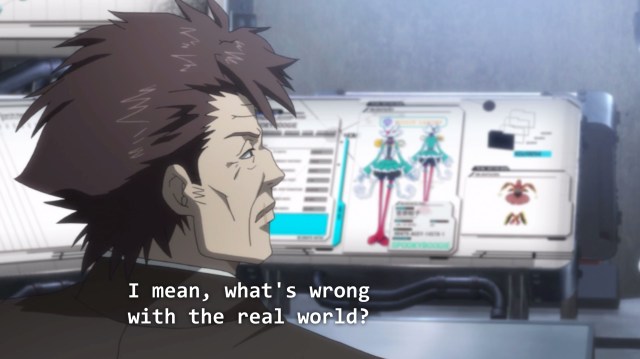

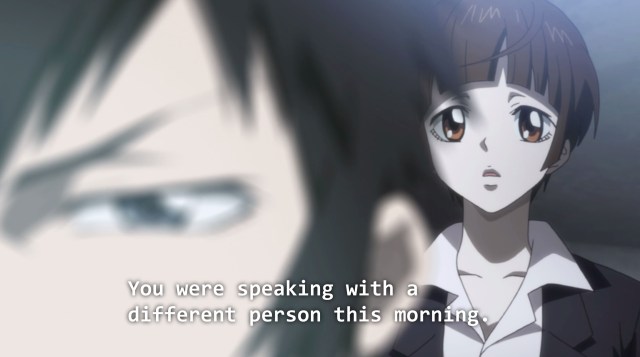
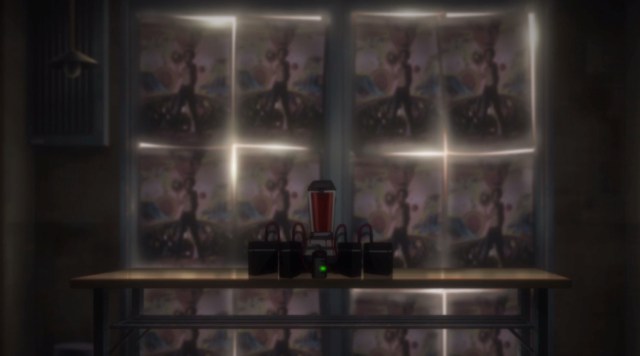
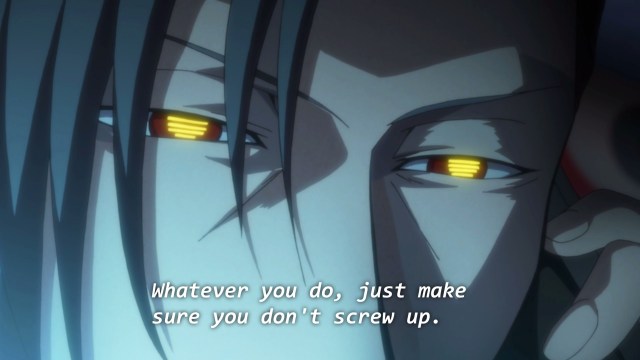
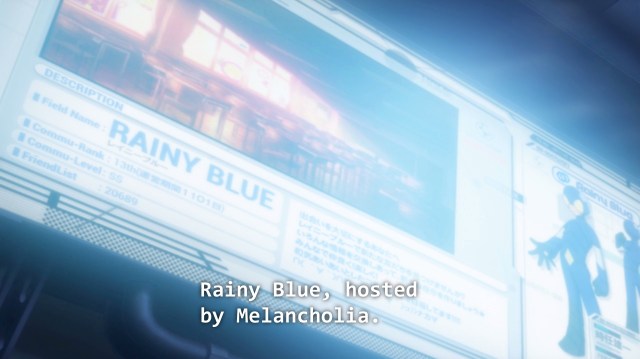
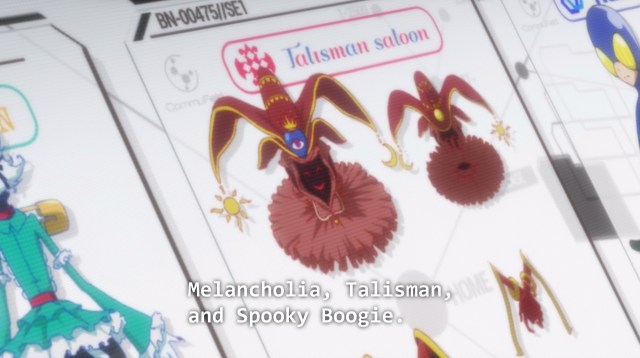
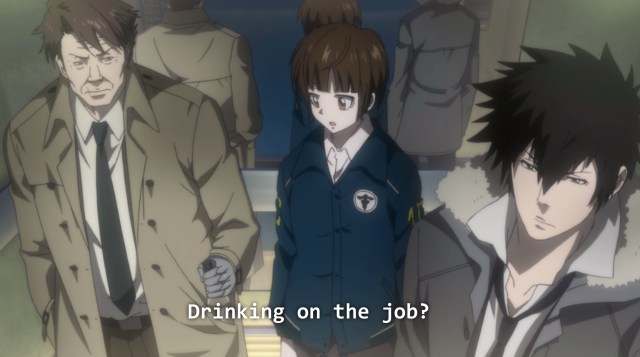

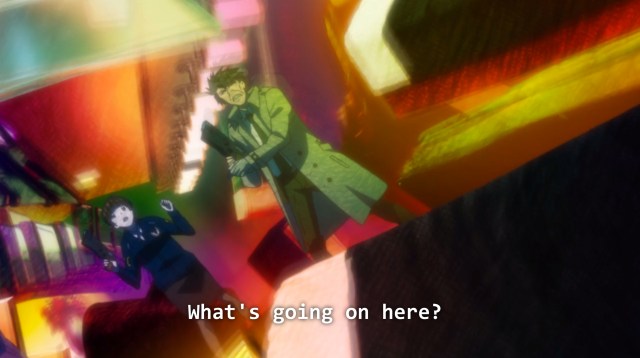
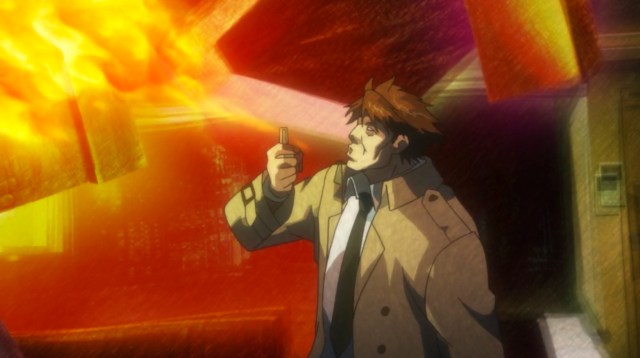
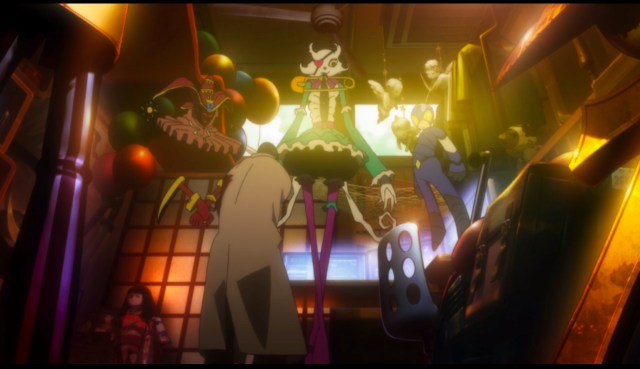
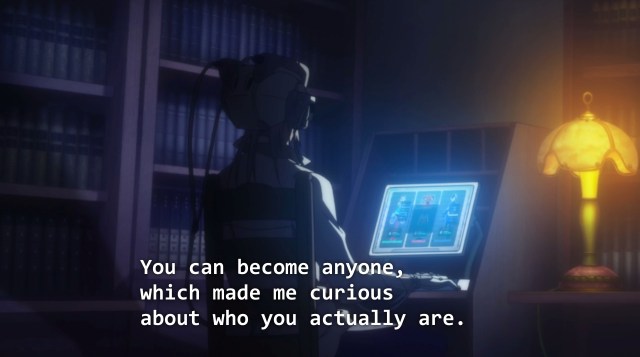
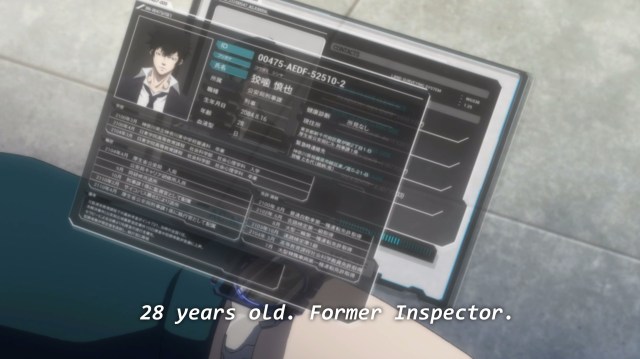





Published: Sep 20, 2015 05:00 pm